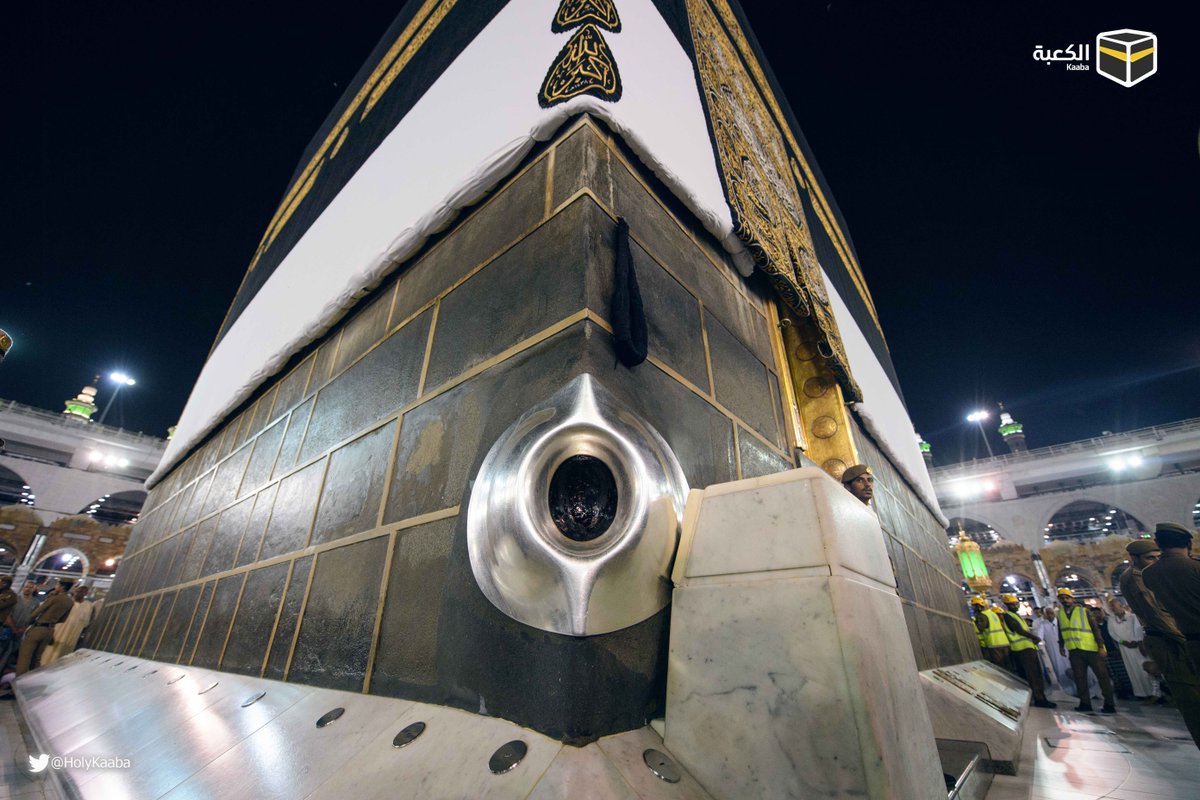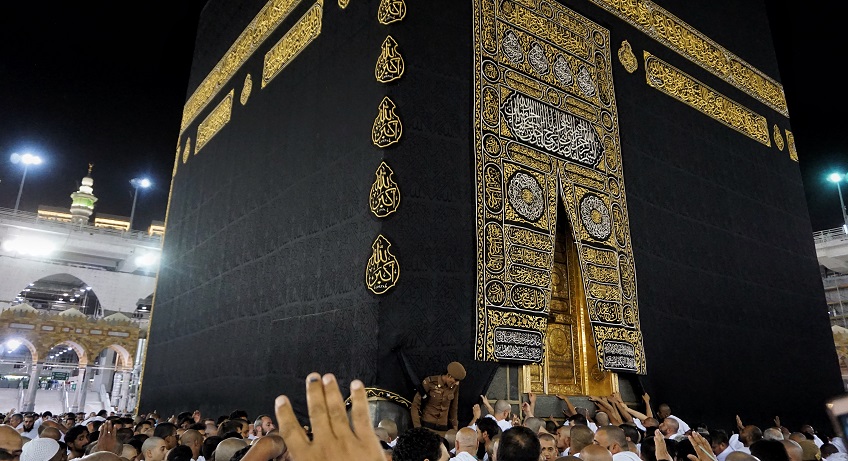Situated in the eastern corner of the house of God, Kaaba – the Black Stone is known as Hajar al-Awad in Arabic. It is the sacred stone where Tawaf—the obligatory rite of Hajj and Umrah pilgrimage—starts and ends. Throughout history, many people including Prophet Muhammad, other well-known Prophets, the Sahabah and millions of pilgrims and pious personalities have performed the religious journeys of Hajj and Umrah, praying and taking blessings from Allah. Paying respect to the Black Stone in Kaaba is an important part of these spiritual journeys.
The Black Stone probably belongs to the pre-Islamic religion of the Arabs. As of today, it is divided into three large pieces with some fragments and is surrounded by a stone ring while being held together with a silver band. According to a legend in Islam, it was given to Adam on his fall from paradise, and that it was originally white in colour but turned black by absorbing the misdeeds of the pilgrims kissing and touching it.
The Black Stone holds a lot of significance and is valued in Islam as a stone from heaven. There are various legends as to how it came into existence and was placed in the Holy wall of Kaaba. Let’s go through a few of them.
The Black Stone History

The Black Stone was given to Ibrahim from Jannah to be placed on the corner of the Holy Kaaba. Abd Allah Ibn Abbas – a cousin of Prophet Muhammad narrated that the Prophet said: “The Black Stone came down from Paradise and it was whiter than milk, but the sins of the sons of Adam turned it black.”
According to Islamic scholars, duas are accepted at the Hajar al-Aswad and on the Day of Judgement, it will be testifying in favour of all those who have kissed it. The Prophet said: “By Allah! On the Day of Qiyamah (judgement), Allah will present the Hajar al-Aswad in such a manner that it will have two eyes and a tongue to testify to the Imaan (faith) of all those who kissed it.”
The Black Stone carries greater importance, as according to an account, it is known that while Ibrahim AS was building the house of God, the Holy Kaaba, for spirituality and worship, it appeared that the stones to complete the wall were short. The Prophet Ibrahim sent his son Prophet Ismail AS to look for an appropriate stone to fit in the gap to finish the Holy wall of Kaaba. When he came back empty-handed, he noticed a shiny white colour stone already placed in the empty space. Ibrahim AS told him the unique stone was delivered to him by Jibreel.
Around 930 CE, the Hajar al-Awad was stolen by the Qarmatians, an extremist Muslim sect from the area of eastern Arabia. They looted Makkah, vandalizing the city with corpses and took away the sacred stone to their base in Ihsaa. According to a historian, the Hajar al-Awad was returned and re-established to its primary location around 952 CE.
Story of The Black Stone Resurrection in Kaaba

At the time of the reconstruction of Kaaba, a conflict arose among the masses when the building of Holy Kaaba reached the position of the Black Stone. People quarreled about who was worthy enough to restore the Black Stone to its primary place. It was decided by the Abu UmayyaIbn al-Mugheera (their elder) who asked the Quraysh (a mercantile Arab tribe that inhabited and controlled the city of Makkah and its Kaaba) to agree on the discernment of the first person to come through the Bani Shaybah Gate (the main northern gate to enter into the area of Kaaba). The Prophet was the one who walked through and put the Black Stone back to its primary place.
Suggested Read: Kiswa Of Kaaba – The Holy Cloth That Adorns The House Of Allah
At first, the stone was whole, but with time and various historical incidents, it is now broken into eight pieces of different sizes and attached to a large stone in a silver frame. The first frame was made by Abdullah bin Zubair, a prominent representative of the second generation of Muslim families in Makkah, and then replaced by different Khalifas (rulers) throughout the years.
Paying Respects at The Black Stone
Muslims from around the world come to Makkah to not only witness the stone but also take every possible chance to kiss it. This Black Stone is the only piece of rock from the original structure of Kaaba built by Ibraham and Ismail. It is the single stone that has lasted through all the events and upheavals that took place at Kaaba.
This centerpiece of the Kaaba is the most respected stone in the world. Muslims wish to kiss and touch it because the Prophet Mohammad did so. It is something to honour and take pride in and kissing it is not a duty but an act of love.
“I know that you are a stone, you do not cause harm or benefit; and if it were not that I had seen Allah’s Messenger kiss you, I would never have kissed you.” – Umar bin al-Khattab, the second Khalifa of the Muslims.
Hajr-e-Aswad, Kaaba FAQs
Is the black stone from heaven?
According to the Islamic legends, the black stone was given to Adam on his fall from heaven.
Why is the black stone important?
The black stone is the starting and ending point of the obligatory rite of Hajj and Umrah pilgrimages. It is the only remnant of the original structure of the holy Kaaba built by Prophet Ibraham (PBUH) and Ismail (PBUH).
What is the black stone used for?
Pilgrims from around the world visit Makkah to kiss and touch the black stone as Prophet Muhammad (PBUH) used to.
What is inside the holy Kaaba stone?
Framed in silver, the black stone’s nature has been a matter of much debate. It has been described as a stony meteorite, basalt stone, piece of natural glass and agate.
Why is the holy Kaaba black?
The black stone in the holy Kaaba was believed to be pure white before it turned black by absorbing the misdeeds of all the pilgrims who kiss and touch it.
What is Hajr-e-Aswad?
Hajr e Aswad is a black rock/stone placed into the eastern edge of the holy Kaaba at Masjid Al-Haram in Makkah.








